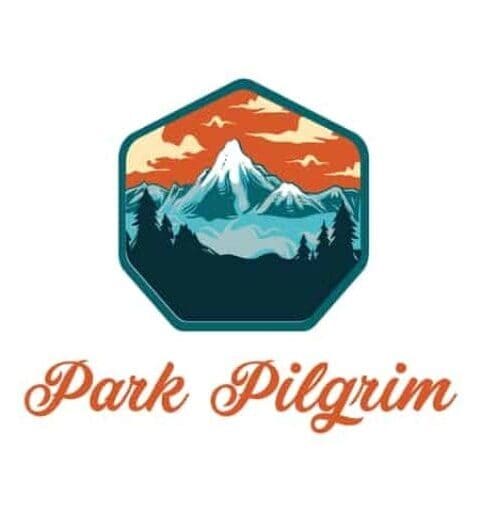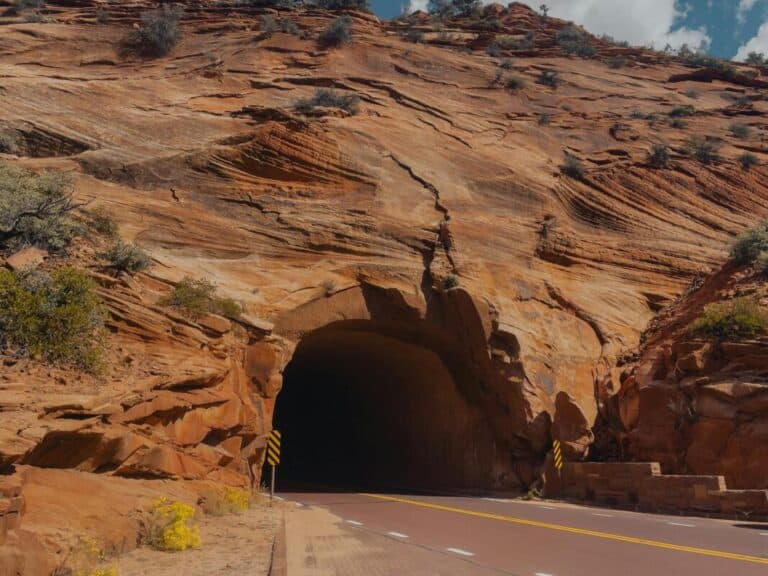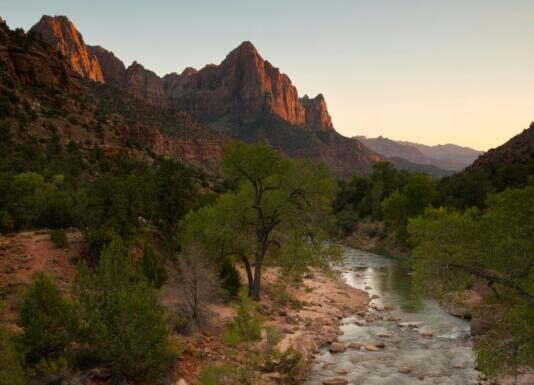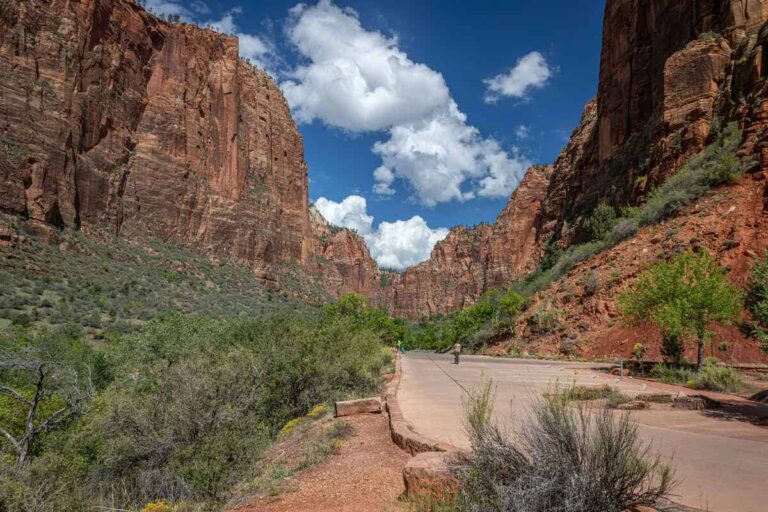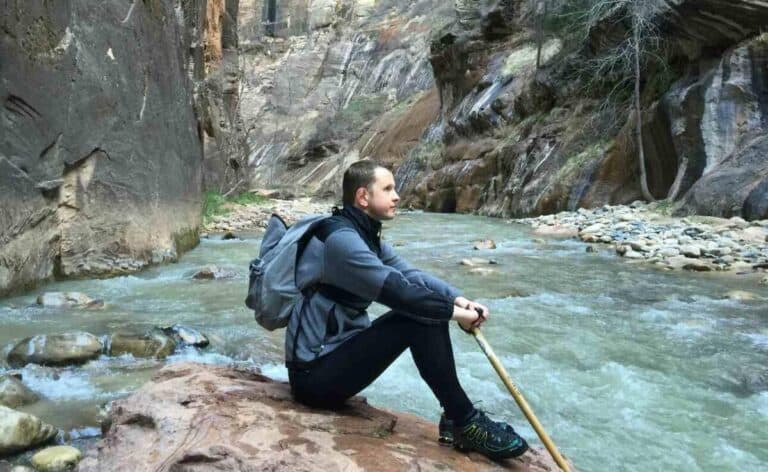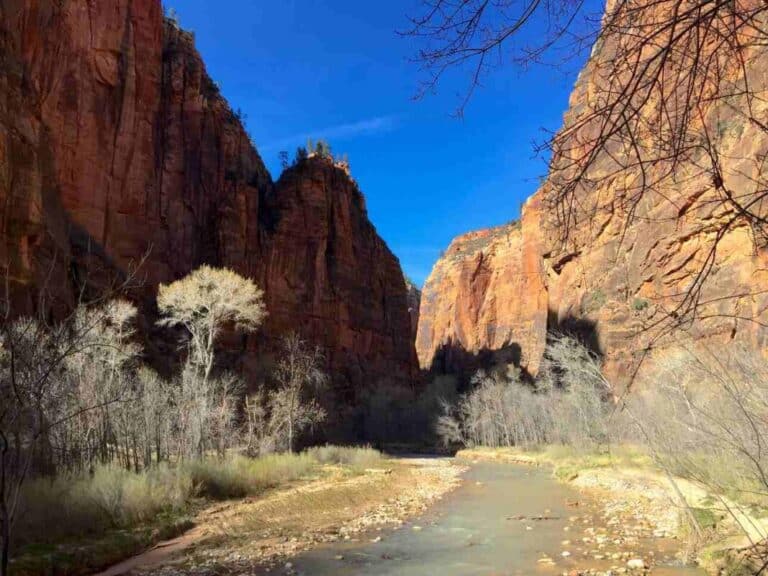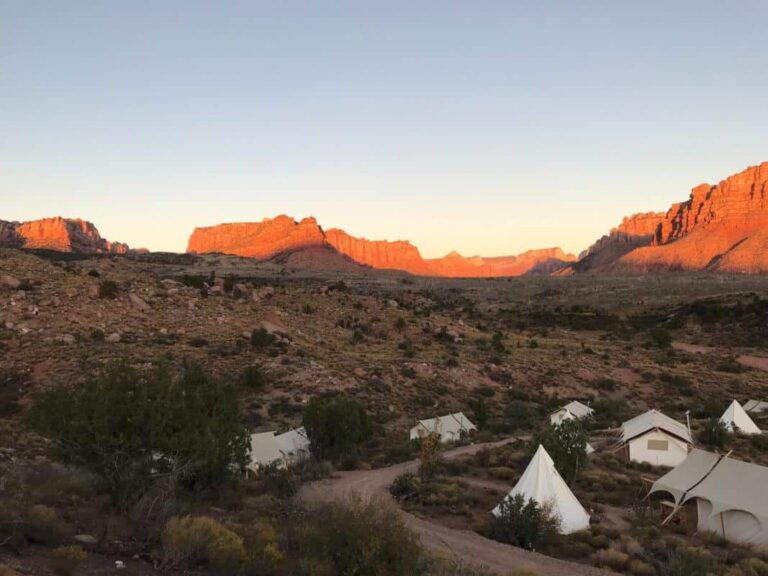Zion National Park in January: Tips for a Winter Adventure
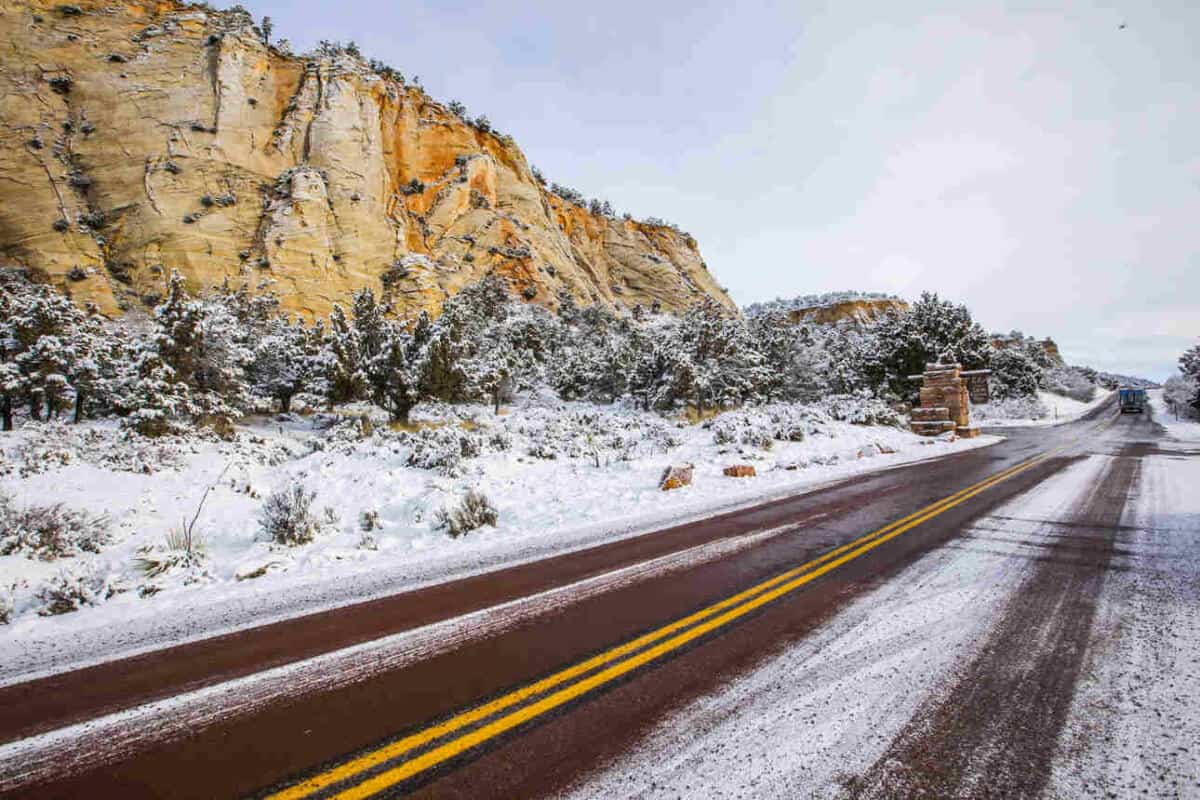
Let’s be frank: Zion in January isn’t everyone’s cup of tea. It’s cold, some trails are icy, and you might wonder why anyone would drag themselves to a national park in the dead of winter. But here’s the thing — it might just be the best-kept secret in the national park system.
While the summer crowds are busy posting their identical Angels Landing selfies on Instagram, January visitors get something way more valuable: solitude. Those famous red rock formations? They’re still there, but now they’re dusted with snow, creating the kind of striking contrast that makes photographers drool. And you won’t have to photoshop out 50 strangers from your pictures.
Is Zion National Park Worth Visiting in January?
It depends on what you want. If your idea of a national park visit involves shorts, tank tops, and complaining about how many people are blocking the trail — then no, January isn’t your month.
But if you appreciate having epic landscapes mostly to yourself and don’t mind throwing on an extra layer? January is pretty damn magical. The park’s dramatic scenery takes on a whole new dimension when snow highlights the red rocks against a crisp blue sky.
It’s the quietest month of the year at Zion, together with February, which means you can actually hear the sounds of nature instead of someone’s portable speaker blasting Free Bird on the shuttle bus. Sure, some higher trails might be snow-covered or icy, but most lower canyon trails stay perfectly accessible if you bring the right gear (see below).
And maybe this is the weird part — January occasionally throws you a curveball with a random 60-degree day. Desert environments are funny like that. But don’t count on it. Always pack like it’s going to be cold, because… Well, it usually is.
The Pros and Cons of Visiting Zion National Park in January
Let’s be real here — every travel decision involves tradeoffs. Here’s what you’re looking at with a January visit:
| PROS | CONS |
|---|---|
| 1. Fewer crowds: January sees the lowest visitation of the year, giving you space to explore popular areas like Zion Canyon without battling crowds. | 1. Cold weather: January temperatures often drop below freezing at night, requiring proper cold-weather clothing and preparation. |
| 2. Winter photography: Snow dusting on red rock creates stunning photographic opportunities not available in other seasons. | 2. Shorter days: Less daylight means you’ll need to plan your activities carefully to maximize daylight hours. |
| 3. Wildlife viewing: Animals are more visible against snow, and winter pushes some wildlife to lower elevations. | 3. Limited access: Some higher elevation trails may be closed or dangerous due to ice and snow. |
| 4. Lower accommodation rates: Off-season pricing means significant savings on lodging in Springdale and nearby towns. | 4. Ice and snow hazards: Trails can become slippery, particularly in shaded areas or during freeze/thaw cycles. |
| 5. No shuttle requirement: During January, you can drive your private vehicle along Zion Canyon Scenic Drive, which requires shuttle use in peak seasons. | 5. Limited dining options: Some restaurants in Springdale operate on reduced hours or close for the season. |
| 6. Cozy accommodations: Winter is perfect for enjoying a warm cabin or lodge with views of Zion’s landscapes. | 6. Risk of flash floods: Winter storms can create dangerous conditions in slot canyons and low-lying areas. |
| 7. Winter clarity: Cold, clear air offers exceptional visibility for long-distance views and stargazing. | 7. Unpredictable weather: Conditions can change rapidly, requiring flexible planning. |
| 8. Photography opportunities: Unique lighting conditions and potential for frost and snow create dramatic landscape photos. | 8. Trail closures: The Narrows may be closed if water temperatures are too cold or water levels are high. |
| 9. Access to trails typically crowded: Popular hikes like Angels Landing may be more accessible without the typical congestion. | 9. Cold water crossings: Stream and river crossings become more challenging and potentially dangerous in cold weather. |
Zion National Park Weather in January
Wanna know what nobody tells you about Zion in January? The weather isn’t actually that bad compared to most northern national parks. We’re not talking Yellowstone-level cold here.
That said, you still need to take the conditions seriously. This is a desert environment in winter, which brings its own challenges.
Average Temperature in Zion National Park in January
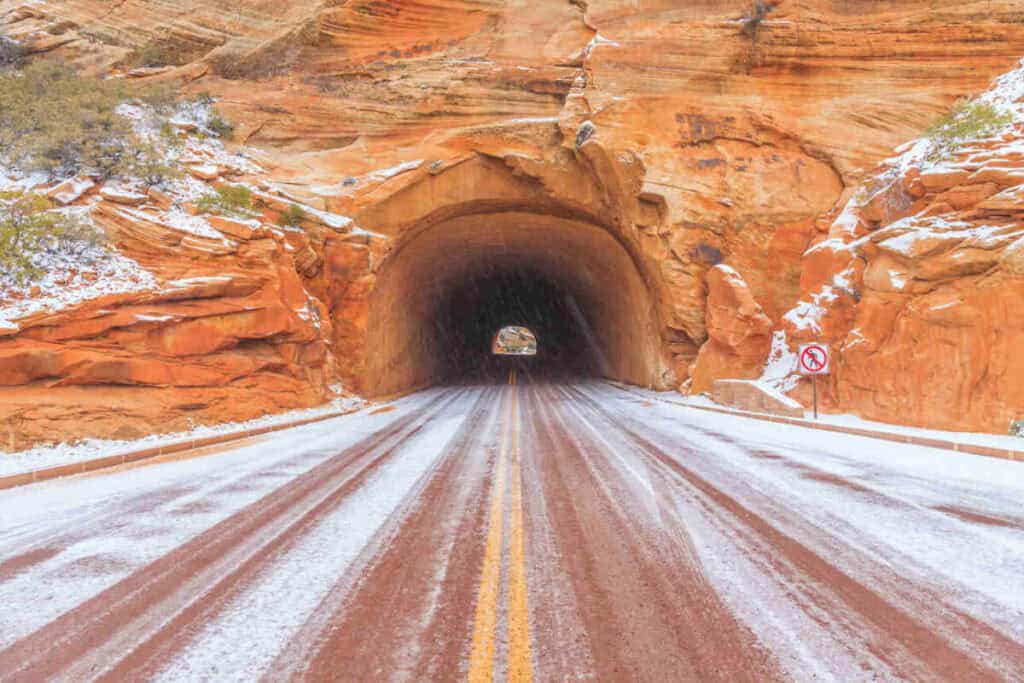
Daytime highs in Zion during January typically hover around 46°F (8°C), while nighttime lows dip to a brisk 25°F (-4°C).
These averages reflect conditions on the canyon floor, but keep in mind that higher elevations can be significantly colder. While the desert environment may surprise you with occasional sunny days that feel warmer, it’s best to prepare for consistently chilly weather.
So layer up — you’ll want to shed layers during midday hikes when the sun warms the canyon. Only to bundle up again as soon as you hit shaded areas or the sun begins to set.
Nights are reliably cold, so whether you’re camping or staying out late for stargazing, make sure your gear can handle freezing temperatures.
Precipitation in Zion National Park in January
January gets about 1.6 inches (4 cm) of precipitation, making it one of the wetter months in this otherwise bone-dry park. What form that takes depends on where you are — rain down low, snow up high.
The snow typically doesn’t stick around long on the canyon floor. The sun comes out and melts it pretty quickly. But north-facing slopes and higher trails hold onto that white stuff much longer. There’s about a 15-20% chance of precipitation on any given day, which means most January visitors see a mix of gloriously clear days and the occasional storm.
Kolob Canyons and the East Rim tend to get more snow than the main canyon. These higher regions stay whiter longer, so plan accordingly if you’re heading up there.
What Is a Winter Inversion in Zion?
Winter inversions is a rather freaky weather phenomenon where cold air gets trapped in the canyon while warmer air sits above it. The result is this ghostly layer of fog or clouds that just hangs in the canyon.
If you’re into photography, this is the jackpot. Rock formations poking through mist like islands in a cloudy sea? That’s the money shot right there. These inversions usually burn off by mid-morning, but sunrise during an inversion is pure magic.
They’re not super common in Zion compared to some other canyon systems, but if you happen to catch one, congratulations — you just experienced something most summer visitors will never see.
What to Pack for a January Visit to Zion National Park
Zion in January requires some thought — not expedition-level planning, but definitely more than your typical vacation packing job.
Clothing
Layering isn’t just some suggestion, it’s critical:
- A legit insulated winter jacket (not just a fleece)
- Mid-layer fleece or soft-shell
- Moisture-wicking base layers (cotton will make you miserable if it gets wet)
- Waterproof hiking pants (or at least water-resistant ones)
- Warm hat and gloves (the dorky-looking ones work better than the stylish ones)
- Neck gaiter or scarf
- Wool or synthetic hiking socks (bring extras — wet feet in winter are the worst)
- Waterproof hiking boots with decent traction
Gear
Beyond just clothes, you need specific equipment for winter hiking:
- A daypack with a rain cover
- Trekking poles with snow baskets (regular tips just punch through snow)
- Microspikes or some kind of traction devices for icy trails
- Insulated water bottles (normal ones freeze, which is annoying)
- Headlamp with spare batteries (it gets dark early, and cold drains batteries faster)
- Sunglasses (snow glare will blind you)
- Camera with extra batteries (again, cold kills batteries)
- Waterproof map (your phone might die, and coverage sucks anyway)
Accessories
These extras will make your January visit way more pleasant:
- Refillable insulated water bottle
- Trail snacks that won’t turn into tooth-breaking rocks when they freeze
- Sunscreen and lip balm (UV reflection off snow is no joke)
- Small first aid kit (you know, just in case)
- Hand and toe warmers (these can save a miserable day)
- Portable battery pack (keeping your phone alive in cold is a challenge)
- Binoculars for wildlife spotting
- Thermos for hot drinks (nothing beats hot coffee or cocoa on a cold hike)
Driving to Zion National Park in January
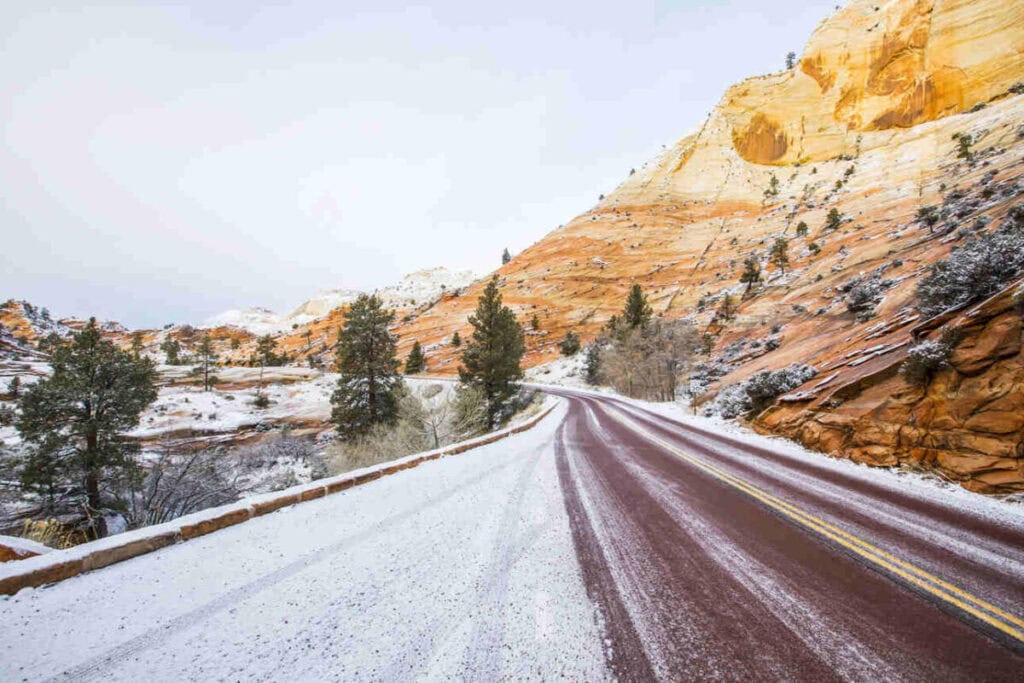
Driving to Zion in January is generally easier than in summer — fewer RVs hogging the road, fewer tourists making random stops for photos. But winter conditions add their own complications.
Winter tires are a good idea, especially if you’re planning to hit higher elevation areas or if snow is in the forecast. While major highways get plowed pretty quickly, park roads sometimes take a bit longer to clear after a storm.
Before you leave, check road conditions. The Utah Department of Transportation website or their 511 phone service will give you the real story. That Zion-Mount Carmel Highway and Tunnel? It can close temporarily during snowstorms, which might really mess up your route.
And look, drive like a reasonable human being on park roads. Early mornings often have black ice on shaded sections, and those winding sections of Route 9 through the park aren’t the place to test your rally driving skills. Leave more space between vehicles and slow the hell down, especially on curves.
Also, throw some emergency supplies in your car — water, snacks, blankets, and a flashlight at minimum. Not because you’re likely to get stranded, but because that’s just basic winter driving common sense.
Things to Do in Zion National Park in January
Just because it’s winter doesn’t mean you’re stuck sitting in a visitor center all day. January offers some unique experiences you can’t get any other time of year.
Hiking in Zion National Park in January
Hiking is still the main event, though conditions vary wildly based on recent weather and where exactly you’re trying to go. Lower elevation trails like Riverside Walk, Watchman Trail, and Pa’rus Trail usually stay accessible all winter without special equipment.
For more challenging trails like Angels Landing, you might need microspikes or similar traction devices when things get icy. Sometimes the park service closes portions of trails when conditions get sketchy, so always check at the visitor center before setting out. Rangers won’t sugarcoat it if a trail is dangerous.
Winter Photography in Zion National Park
January is a photographer’s dream — if you can handle the cold. The lighting conditions are completely different from summer, with the low winter sun creating these dramatic shadows and highlights on canyon walls that summer visitors never see.
The contrast of snow against red rock is just ridiculous. Popular spots include Canyon Junction Bridge at sunset (that classic Virgin River/Watchman shot), the Towers of the Virgin viewpoint at sunrise, and the Court of the Patriarchs after a fresh snow dusting.
Explore the Narrows in January
Yes, you can hike The Narrows in January, but it’s not something to take lightly. Water temperatures hover between 35-45°F, which will absolutely give you hypothermia if you’re not properly equipped. This isn’t a “maybe I’ll get my feet wet” situation — you’re walking in freezing water.
You’ll need proper dry pants or a full dry suit, neoprene socks, and special footwear. Several outfitters in Springdale rent complete cold-weather Narrows packages. Always check flash flood forecasts and water flow rates before attempting this hike. Winter storms can turn this place dangerous with barely any warning.
Hike Angel’s Landing in January

Angels Landing in January? Absolutely doable, but you need to be smart about it. The trail to Scout Lookout is usually accessible, though often icy in spots — especially those Walter’s Wiggles switchbacks that never see direct sun.
The chain section to the final Angels Landing viewpoint is where you need to be really careful. When covered in ice or snow, it can be flat-out dangerous or completely impassable. Many winter visitors wisely turn around at Scout Lookout, which still gives you those jaw-dropping canyon views without the potentially deadly ice scramble.
Snowshoeing in Zion National Park in January
Most people don’t associate Zion with snowshoeing, but after a good storm, it becomes entirely possible — especially in higher elevation areas like Kolob Terrace Road and the East Rim.
The rangers can point you toward appropriate routes based on current snow conditions. Kolob Canyons, when open, offers beautiful snowshoeing with way fewer people than the main canyon. Just don’t expect Yellowstone-level snow depths — this is still a desert environment.
Wildlife Viewing in Zion National Park in January

Animals don’t disappear in winter; they’re often easier to spot against the snow. Mule deer are everywhere this time of year, typically hanging out at lower elevations where food is more accessible.
Wild turkeys gather in these comically large flocks during winter, and you can often find them strutting along the Pa’rus Trail. Bighorn sheep are more frequently spotted on cliff faces during winter months, and birding remains surprisingly good, with year-round residents like the American dipper active along waterways.
Visit Zion Canyon Scenic Drive in January
Here’s a major win for January visitors: you can drive your own vehicle along the Zion Canyon Scenic Drive. During busy months, this road is shuttle-only, which limits your flexibility and often means waiting in line for transportation.
In January, you can cruise this scenic road at your own pace, using your car as a warm base between hikes. The drive provides access to trailheads for the Emerald Pools, Weeping Rock, Riverside Walk, and more, with plenty of pullouts for photos.
Can You Visit the Narrows in January?
I already touched on this, but yes, you can visit The Narrows in January if you’re properly equipped and conditions allow. Water levels are typically lower than spring but can spike quickly after rain or snowmelt.
Even if you decide not to actually enter the water, the Riverside Walk leading to the Narrows entrance remains open year-round. This lets all visitors at least see the beginning of this famous slot canyon, which is impressive even from the shoreline.
Can You Visit Kolob Canyons in January?
The Kolob Canyons section is typically accessible in January, though the road might temporarily close after snowstorms. This less-visited section offers spectacular winter scenery and hiking on trails like Timber Creek Overlook and Taylor Creek.
The Kolob Canyons Visitor Center usually stays open through winter, but with shorter hours than summer. It’s worth checking if this section is accessible before making the drive — it’s separate from the main canyon, and conditions can be quite different.
Can You Visit the Emerald Pools in January?
The Emerald Pools trails are generally accessible in January, though upper sections might be icy or snow-covered. The Lower Emerald Pool trail typically remains passable year-round, while the Middle and Upper Pools might require traction devices after snow or freeze/thaw cycles.
The waterfalls feeding the pools sometimes form these spectacular ice formations during cold periods. Seriously, these frozen cascades create unique photo opportunities that summer visitors completely miss out on.
Take a Park Ranger-Led Program in January
Ranger programs thin out in winter, but the Zion Nature Center often hosts indoor activities, and weekend ranger talks might be available at the Human History Museum.
Check the park’s website or ask at the visitor center for the current schedule. Winter offerings change year to year based on staffing and conditions, but rangers who work winter shifts tend to be passionate about the season’s unique characteristics.
Stargazing in Zion National Park in January
January delivers exceptional stargazing opportunities. The clear winter air provides incredible visibility of the night sky, and those long nights mean you can start stargazing earlier without staying up until midnight.
The Pa’rus Trail, accessible right from the visitor center, provides good stargazing with minimal light pollution. For serious star nerds, the Kolob Terrace Road area offers even darker skies when accessible. Just dress like you’re going to Antarctica — standing still while looking up in January gets cold fast.
Enjoy Scenic Views in Zion National Park in January

Zion’s famous viewpoints hit different in January. The Canyon Overlook Trail, when open, gives you these spectacular vistas of the main canyon with potential snow highlighting the formations.
The clarity of winter air often means you can see further than in summer’s haze, making expansive viewpoints along the Kolob Terrace Road particularly rewarding. The contrast between white snow, red rock, blue sky, and green pines creates a color palette that summer just can’t match.
Where to Stay in Zion National Park in January
January means killer accommodation deals. This is when you can score rooms at places that would be booked solid or charging triple in summer.
Lodges in Zion National Park in January
Zion Lodge, the only in-park accommodation, stays open year-round. January offers much better availability and sometimes winter special rates. The location is unbeatable — you’re literally in the middle of the park with immediate trail access.
Some rooms have fireplaces, which hit different after a cold day of hiking. The dining room runs reduced hours but serves all three meals. Staying here maximizes your exploration time since you’re already in the park when you wake up — especially valuable when daylight hours are limited.
Hotels near Zion National Park in January
Springdale, the gateway town to Zion, has tons of hotels and motels, most of which stay open year-round. January brings dramatically reduced rates compared to peak season — we’re talking possible savings of 50% or more at some properties.
Places like Cable Mountain Lodge, Cliffrose Lodge, and the Hampton Inn offer winter perks including heated pools or hot tubs that feel amazing after a cold hike. Some smaller properties close seasonally, though, so do your homework before booking.
Campgrounds in Zion National Park in January
For hardcore winter campers, South Campground closes in January, but Watchman Campground stays partially open with limited services. Winter camping requires serious preparation for those freezing nighttime temperatures.
RV campers should know that while Watchman has hookups, freezing temperatures can mess with water systems. Several private campgrounds in Springdale and nearby communities offer alternatives with more winter amenities if tent camping in below-freezing temps doesn’t sound appealing.
Getting Around Zion National Park in January
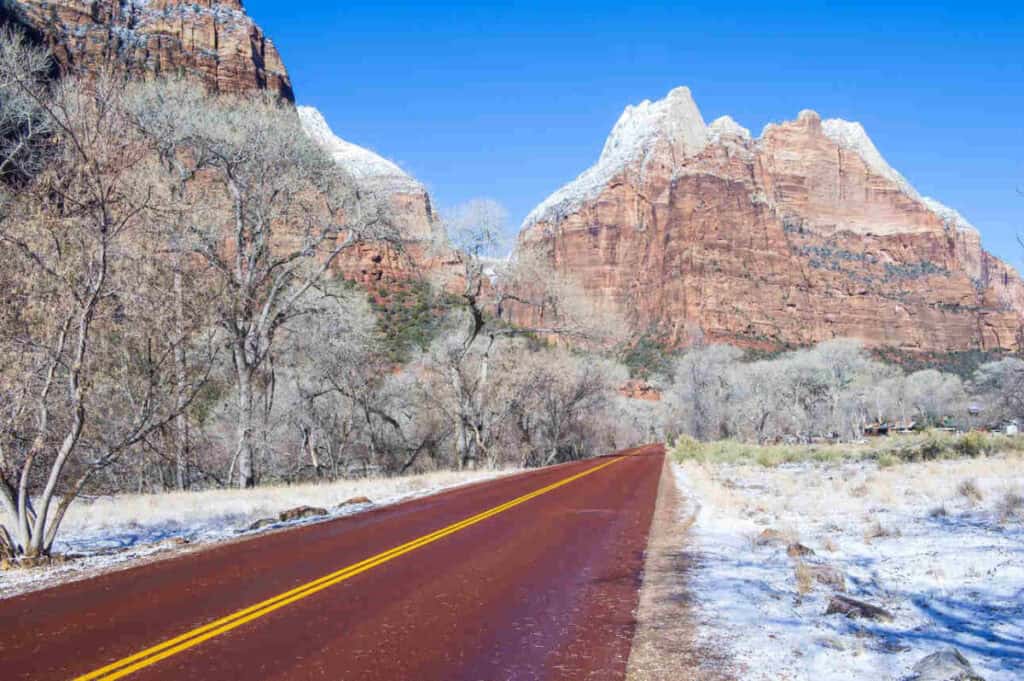
January transportation in Zion is actually easier than peak season in some ways, though winter conditions add their own wrinkles.
Car Rental for Zion National Park in January
Renting a car gives you maximum flexibility for January visits. Unlike summer, you can drive your own vehicle on Zion Canyon Scenic Drive, which is a massive advantage.
Las Vegas and St. George airports provide the closest rental options. For winter driving, consider requesting a vehicle with all-wheel or four-wheel drive if you’re planning to explore beyond the main canyon, especially for higher elevation sections after snowfall.
Shuttle Service in Zion National Park in January
Here’s some good news: the park’s shuttle system typically doesn’t operate in January. That’s actually a win for visitors since it means you can drive your private vehicle everywhere within the park.
Some commercial shuttle services run from Springdale hotels, and certain tour companies operate winter excursions to specific areas of the park, but you likely won’t need them unless you’re arriving without a car.
Biking in Zion National Park in January
Cycling in Zion during January is possible but totally weather-dependent. The Pa’rus Trail stays open to bikes year-round and gives you a scenic paved path along the Virgin River.
Biking the Zion Canyon Scenic Drive is allowed in January and offers a challenging but rewarding experience when roads are clear. Just prepare for potentially cold conditions and limited daylight. And let’s be real — biking uphill in winter is a special kind of suffering that’s not for everyone.
Festivals and Events near Zion National Park in January
January isn’t exactly festival season in southern Utah, but there are still some noteworthy happenings in the region around Zion.
New Year’s Events
Communities near Zion often host small New Year’s celebrations during the first weekend of January. Springdale, St. George, and Kanab might offer special dinners, small concerts, or community gatherings to ring in the new year.
Some hotels and restaurants in Springdale organize their own New Year’s events, giving you a local celebration option without driving far from the park. Don’t expect Times Square-level festivities, but the small-town charm has its own appeal.
Winter Arts Festival
St. George, about an hour from Zion, typically hosts winter arts events in January, including gallery walks, performances at Tuacahn Center for the Arts, and exhibitions at the Southern Utah Museum of Art.
These cultural events give you evening entertainment options after days in the park, which is particularly nice given the early winter sunsets. They’re not exactly Broadway productions, but they provide a taste of local culture.
Southwest Winter Festivals
The broader Southwest region hosts various winter festivals in January. The Bryce Canyon Winter Festival (at nearby Bryce Canyon National Park) usually happens in February but sometimes has January events.
Cedar City, less than an hour from Zion, often hosts winter-themed community events at Southern Utah University that visitors can enjoy. These tend to be small-scale affairs, but they offer a glimpse into local winter traditions.
Summer Attractions Also Open in Zion National Park in January
Several popular summer attractions remain accessible during January visits, giving you a year-round experience with a winter twist.
- Zion Human History Museum stays open year-round, though with shorter winter hours. The museum provides context for the cultural and natural history of the park and offers spectacular views of the Towers of the Virgin formation from its patio.
- The Watchman Trail, which you can access right from the visitor center, typically remains open and gives you a moderate hike with great views of lower Zion Canyon. Its southern exposure means this trail often gets more sun and less ice than others.
- The Zion-Mount Carmel Highway and Tunnel stay open throughout January (weather permitting), giving you access to the eastern side of the park with stunning viewpoints and the Canyon Overlook Trail when conditions allow.
Statutory Holidays during January in the United States
Knowing U.S. holidays helps you anticipate potential upticks in visitation, even during January’s typically quiet period.
Federal holidays in January include:
- New Year’s Day (January 1)
- Martin Luther King Jr. Day (third Monday in January)
These holidays might bring slightly increased visitation, particularly from regional visitors taking advantage of the three-day weekend created by MLK Day. But even on these holidays, January visitation stays way below peak season levels — we’re talking “slightly busier” in January means you might see a dozen people instead of four on a trail.
Visiting Zion National Park in January FAQ
What’s the Best Time of the Year to Visit Zion National Park?
That depends entirely on what you want from your visit. Spring (April-May) brings moderate temperatures and flowing waterfalls. Summer (June-August) offers long days but brutal heat and ridiculous crowds. Fall (September-October) features pleasant temperatures and fall colors.
Winter (November-February) provides solitude and potentially snow-dusted landscapes but requires cold-weather preparation. The “best” time isn’t universal — it depends on your preferences for weather, crowd tolerance, and specific activities you’re after.
When Is the Shoulder Season in Zion National Park?
Zion’s shoulder seasons are typically late fall (November) and early spring (March-April). These periods balance fewer crowds than summer with milder temperatures than winter.
Shoulder seasons give you good value on accommodations while still offering access to most park facilities and trails. March typically brings the beginnings of spring blooms, while November offers fall colors in lower elevations.
What Time Does it Get Dark in Zion National Park in January?
In January, Zion experiences relatively early sunsets. Early January, sunset happens around 5:15 PM, with darkness falling by 5:45 PM. By the end of the month, sunset stretches to approximately 5:45 PM.
These shorter days mean you need to plan hikes and activities carefully, as temperatures drop quickly after sunset. Morning light arrives around 7:30 AM, giving winter days about 10 hours of daylight for exploration. Not a lot of time, so use it wisely.
Can You Go to Zion National Park in January?
Hell yes, you can! Zion stays fully open in January, just with some seasonal limitations. The main visitor center, Zion Human History Museum, and most major viewpoints and trails remain accessible.
January visitors need to prepare for cold temperatures, potentially icy trail conditions, and reduced hours for some facilities. The reward is experiencing Zion’s majesty without crowds and possibly seeing those red rock landscapes beautifully accented with snow.
Is the Narrows Open in January?
The Narrows trail technically stays open in January, weather and conditions permitting, though hiking it requires specialized cold-weather gear. The Virgin River water temperature typically hovers between 35-45°F in January, meaning you need dry suits or dry pants, neoprene socks, and special footwear.
Park officials may close the Narrows if flow rates exceed safe levels (usually above 150 cubic feet per second) or if flash flood warnings are in effect. Always check current conditions at the visitor center before attempting this hike in winter. This isn’t the kind of adventure you want to attempt unprepared.
Zion National Park Travel Guide
Where Is Zion National Park, Utah?
Zion sits in southwestern Utah, near the town of Springdale. It’s about 163 miles northeast of Las Vegas, Nevada, and roughly 300 miles south of Salt Lake City, Utah.
The park belongs to Utah’s “Mighty Five” national parks and sits at the junction of the Colorado Plateau, Great Basin, and Mojave Desert regions. This unique location creates its distinctive landscape of canyon systems, towering cliffs, and desert terrain that doesn’t look quite like anywhere else.
Is Zion National Park, USA safe?
Generally, yes. Zion has minimal crime issues, though standard precautions with valuables are always smart. The real safety concerns relate to natural hazards, particularly flash floods that can happen with scary speed in slot canyons like The Narrows, even in January.
Winter brings additional hazards like ice on trails, cold temperature exposure risks, and occasionally falling ice from cliff faces. Always check current conditions at the visitor center, follow ranger advisories, and bring appropriate gear for winter conditions.
How Do I travel to Zion National Park, USA?
The closest major airport to Zion is McCarran International Airport in Las Vegas, Nevada (about a 2.5-hour drive). Salt Lake City International Airport is approximately 4.5 hours away. Regional airports include St. George, Utah (45 minutes) and Cedar City, Utah (1 hour), though these offer more limited flight options.
After flying in, most visitors rent a car to reach the park. There aren’t direct public transportation options to Zion, though some private shuttle services operate from Las Vegas and St. George to Springdale.
Zion National Park Car Rental
For January visits, renting a car gives you maximum flexibility and is highly recommended. Rental agencies operate at all nearby airports, with the widest selection in Las Vegas and Salt Lake City.
For winter driving, consider requesting vehicles with all-wheel drive if planning to explore beyond the main canyon, particularly after snowfall. Major rental companies in the region include Enterprise, Hertz, Avis, and Budget, among others.
Zion National Park Travel Planning Guide
Do I need a visa for visiting the United States?
Citizens of many countries, including Canada, the UK, Australia, Japan, and most European nations, can enter the US under the Visa Waiver Program (ESTA) for stays up to 90 days. Other nationalities require a tourist visa (B2).
The ESTA application should be completed online at least 72 hours before travel. For those requiring a visa, application processing times vary by country, so apply well in advance through your local US embassy or consulate.
Do I need travel insurance for Zion National Park?
If you’re an international visitor, yes, absolutely get travel insurance for Zion, especially in winter when weather can cause travel disruptions and activities carry increased risk. U.S. healthcare costs are insanely high for uninsured visitors.
Look for policies covering emergency medical treatment, evacuation (particularly important in remote areas), trip cancellation, and lost luggage. Some credit cards offer limited travel insurance, but dedicated policies typically provide more comprehensive coverage.
What’s the best way to book my Zion National Park accommodation?
For January visits, booking directly with hotels or through major booking platforms like Booking.com, Expedia, or Hotels.com will give you the most options. January typically has excellent availability, though booking in advance is still smart for weekend stays.
For Zion Lodge (the only in-park accommodation), make reservations through the official concessionaire website (currently Xanterra) as far in advance as possible, even for January visits. It’s the only place to stay inside the park boundaries, which gives it a unique appeal even in winter.
Do I need to rent a car in Zion National Park?
For January visits, renting a car is strongly recommended. Unlike summer months, the Zion Canyon Scenic Drive is open to private vehicles in January, eliminating the need for shuttle transportation within the park.
Having your own vehicle also provides a warm retreat between winter hikes and the flexibility to visit different sections of the park and nearby attractions on your own schedule. Public transportation options are limited, especially in winter.
Will my phone work in Zion National Park?
Don’t count on it. Cell service in Zion is spotty and unreliable. In the main Zion Canyon and Springdale, you might get intermittent coverage from major carriers like Verizon and AT&T, with Verizon generally offering better coverage.
More remote areas of the park, including much of the backcountry, Kolob Canyons, and parts of the East Rim, have no cellular coverage at all. Download offline maps before your visit and don’t rely on phone service for navigation or emergencies.
What’s the best site to buy flights to Zion National Park?
For flights to airports serving Zion, comparison sites like Skyscanner, Google Flights, or Kayak typically give you the best overview of options and prices. January is generally a lower-demand period for flights to the region, potentially offering better pricing.
Consider flying into Las Vegas for the typically lowest fares and most flight options, though this requires a longer drive (about 2.5 hours) to reach the park. St. George Regional Airport, while closer, offers fewer flight options and often higher fares.
If Visiting Zion National Park in January Isn’t for You…
If winter conditions don’t appeal to you, consider visiting Zion during another month. Each season offers different experiences in the park:
- Visiting Zion National Park in February
- Visiting Zion National Park in March
- Visiting Zion National Park in April
- Visiting Zion National Park in May
- Visiting Zion National Park in June
- Visiting Zion National Park in July
- Visiting Zion National Park in August
- Visiting Zion National Park in September
- Visiting Zion National Park in October
- Visiting Zion National Park in November
- Visiting Zion National Park in December
Look, January in Zion isn’t for everyone. If you hate cold weather or need guarantee that every trail will be open, pick another month. But if you want to experience one of America’s most popular national parks without the Instagram hordes, January might just be the perfect time to bundle up and discover what Zion’s really about when it’s not playing host to the summer masses.
